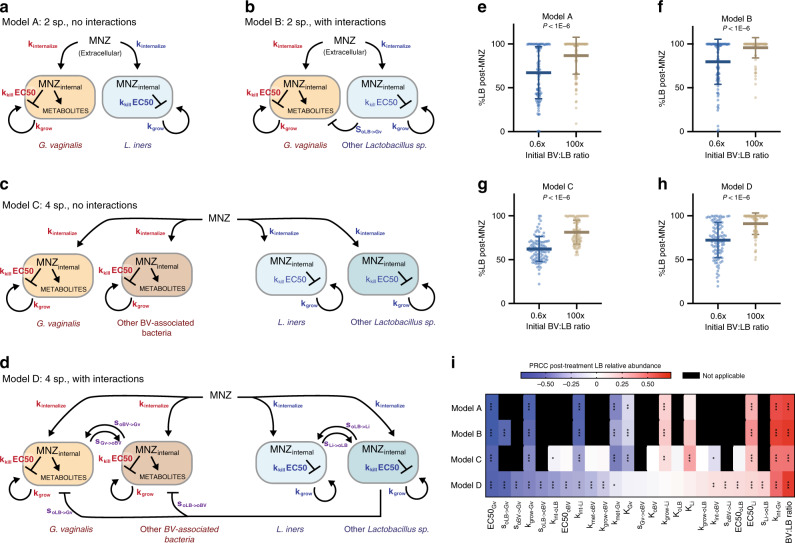Fig. 4. High pre-treatment BV:LB ratio is predicted to reduce MNZ efficacy in more complex microbial environments regardless of strain variability.
a Original model structure validated in Fig. 2. b Two-species model with negative interaction between other Lactobacillus spp. (oLB) and Gv. c Four species model of Gv and Li with additional representative bacteria for BV-associated bacteria and Lactobacillus spp. d Four species model with interspecies interactions. Within BV-associated bacteria and Lactobacillus spp. interactions were simulated from mutualistic (both benefit) to commensal (one benefits, the other is neutral). Inhibitory (amensal) interactions are included between D-lactic acid producing bacteria, other Lactobacillus spp., with both BV-associated bacteria. e–h Post-MNZ treatment (48 h, 500 μg/ml) Lactobacillus spp. relative abundances at 0.6× and 100× BV-associated bacteria to Lactobacillus spp (BV:LB) ratios for each model type (n = 100 independent simulations for each ratio, data are presented as mean ± SD). Each point represents a parameter set randomly sampled from physiological ranges in Supplementary Tables 2 and 3. Statistical analysis was completed using unpaired, two-sided t-tests: Model A (p = 7.20 × 10−7, t ratio = 5.32, df = 198), Model B (p = 1.67 × 10−7, t ratio = 5.649, df = 198), Model C (p = 8.05 × 10−18, t ratio = 9.725, df = 198), and Model D (p = 1.70 × 10−13, t ratio = 7.954, df = 198), which were corrected for multiple comparisons using the Benjamini and Hochberg method. i Significantly sensitive parameters were assessed by partial rank correlation for each model structure (a–d) in a global sensitivity and uncertainty analysis, multiple comparisons where adjusted for using Bonferroni correction (asterisks indicate significance as *p < 0.05, **p < 0.01, ***p < 0.001). Source data are provided as a Source data file.

